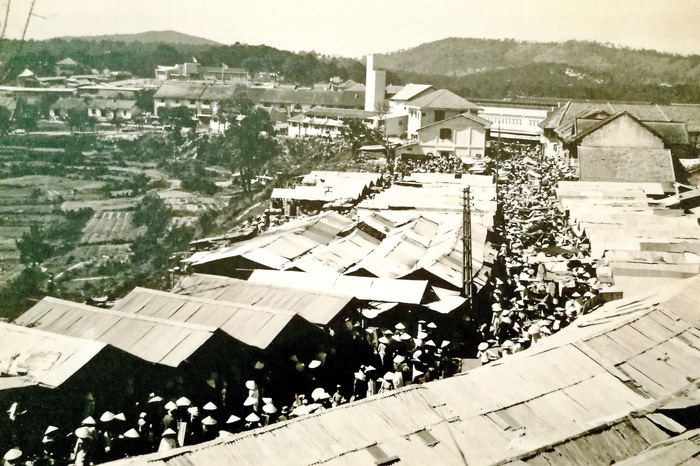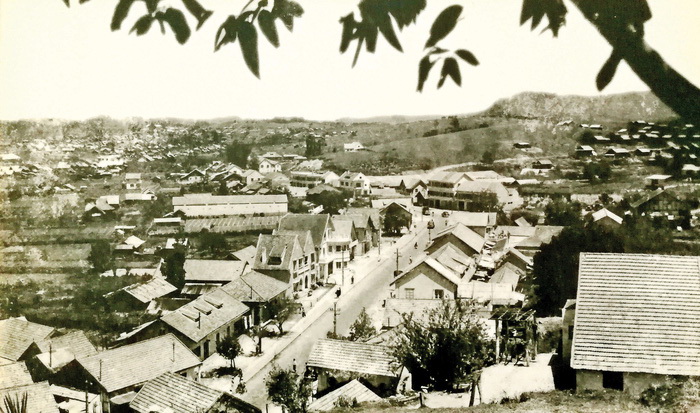An administration established in Da Lat by Vietnam’s last king boasts lasting historic significance and provides inspiration for the city’s future expansion.
>> Untold stories of Da Lat – P7: Pioneering veggie growers
>> Untold stories of Da Lat – P6: Cherry blossom valley
>> Untold stories of Da Lat – P5: Billeting army officers’ wives
>> Untold stories of Da Lat – P4: The Haunted House on Prenn Pass
>> Untold stories of Da Lat – P3: Royal partition
>> Untold stories of Da Lat – P2: Stone villa of Nguyen King’s concubine
>> Untold stories of Da Lat – P1: Nguyen Dynasty’s trusted retainer
Da Lat is an idyllic resort town and capital of Lam Dong Province in the Central Highlands.
Within the first half of the 20th century, the French had built Da Lat into a ‘romantic French town’ on the Lang Biang Plateau with hallmark European-style villas.
Throughout geo-political conflicts and financial downturns, including two world wars and global economic recession, Da Lat endured as France’s capital of Indochina, often garnering favors from the government and playing a key role in development policies.
Following his abdication in 1945, the former King Bao Dai (1913-1997), the Nguyen Dynasty’s and the country’s last monarch, ruled the town for a short period of time.
Heart of the regal realm
King Bao Dai was sent back to Vietnam by the French government in 1949, four years after his abdication, to serve as the chief of the State of Vietnam.
One year later, he released an edict, mandating that Da Lat would be the capital of his Hoang Trieu Cuong Tho (Domaine de la Couronne-Regal Domain), comprised of five Central Highlands provinces, including Lam Dong.
Each of Bao Dai’s decisions was approved by the French Resident Superior in central Vietnam.
A few months later, Bao Dai appointed French Colonel Didelot as his representative to the Central Highlands localities, including Buon Ma Thuot, Dak Lak, Kon Tum, Pleiku, Lam Vien, and Dong Nai Thuong (Upper Dong Nai).
Ngo Dinh Diem (1901-1963), a former official of the Nguyen Dynasty (1802-1945), was named Prime Minister of the State of Vietnam by Bao Dai in 1954.
In October 1955, after winning a heavily rigged referendum, he deposed Bao Dai and became the president of the first Republic of Vietnam, a state he established himself.
In the end, Hoang Trieu Cuong Tho lasted a mere four years and 11 days.
Orderly society
Tuoi Tre (Youth) newspaper reporters recently interviewed Nguyen Huu Tranh, a former employee at the Lam Dong Department of Science and Technology.
Tranh himself lived through the Hoang Trieu Cuong Tho era and has dedicated over 30 years to research on Da Lat.
As a 13-year-old in 1952, Thanh would attend school in downtown Da Lat.
Outstanding students in the city were granted the privilege of attending Bao Dai’s longevity cerebrations and receiving gifts presented at the palace by the king himself.
Tranh recalls life under Bao Dai as orderly and idyllic, particularly as anyone wishing to visit the town was expected to seek permission from the Public Security Department under the Head of State Office in Hanoi and Saigon (known now as Ho Chi Minh City).
Migrants wishing to start new lives in the town needed guarantors already living in Da Lat with decent jobs.
“The laws in Da Lat were quite different and stringent compared to the overall legal system,” Tranh noted.
 |
| A view of a market on Vanvollenhoven Street (Phan Boi Chau Street, Da Lat City now) in 1955. Courtesy of the Lam Dong Museum |
Thefts and robberies were only occasional incidences, while panhandling and violence were also kept to a minimum. Public gambling and drinking were also extremely rare, Thanh shared.
Streets and public areas in the city were kept spotless and the beauty of the city was maintained by local residents, including vendors at Da Lat Market who gave their stalls and the surroundings a thorough cleaning around 4:00 pm every day.
He added that residents were required to adhere to common construction patterns on designated streets and construction permits were hard to come by during the Hoang Trieu Cuong Tho period.
For instance, Duy Tan Street, now 3-2 Street, was home to only three-floor semi-detached houses, while Phan Dinh Phung Street boasted only two-story residences.
Vo Tanh Street (now Bui Thi Xuan Street) was lined with wooden houses, while Hai Ba Trung Street was home to condominiums inhabited by civil servants from state agencies.
Residents had to seek consent from local authorities regarding details as small as the shape or paint colors of their fences.
Nguyen Van Ky, now 91, worked as a Morse code communicator for Bao Dai.
Migrants of Kinh descent, who make up the majority of Vietnamese population, encountered immense difficulty settling down in the localities as the Hoang Trieu Cuong Tho administration focused on fostering the welfare of ethnic minority communities and current Kinh inhabitants.
As with life under the French rule, felling trees to build houses in forests or even picking flowers on the streets was strictly prohibited.
After the Hoang Trieu Cuong Tho came to an end, Diem’s administration allowed Kinh migrants to move freely to the Central Highlands and scrapped many of the laws credited with maintaining order during the French and Hoang Trieu Cuong Tho eras.
Preserving the vestiges
In mid-2014, Prime Minister Nguyen Tan Dung approved a zoning adjustment project for Da Lat City until 2030 with a vision toward 2050.
The future Da Lat will cover an area nearly 10 times the current size.
The zoning plan was determined by identifying lands with optimal soil conditions, climate, and grounds to foster economic growth.
The plan thereby aims to expand the city’s and neighboring areas’ investment climate, build satellite urban areas to aid Da Lat’s growth, and safeguard the current city by preserving its rich cultural and tourism values.
The project will be carried out by architect Thierry Huau and his French associates under strict supervision from competent Vietnamese agencies.
Speaking with Tuoi Tre, Huau stressed the importance of erecting a ‘heritage axis’ in the existing and prospective Da Lat to best preserve its relics.
Like us on Facebook or follow us on Twitter to get the latest news about Vietnam!




















































